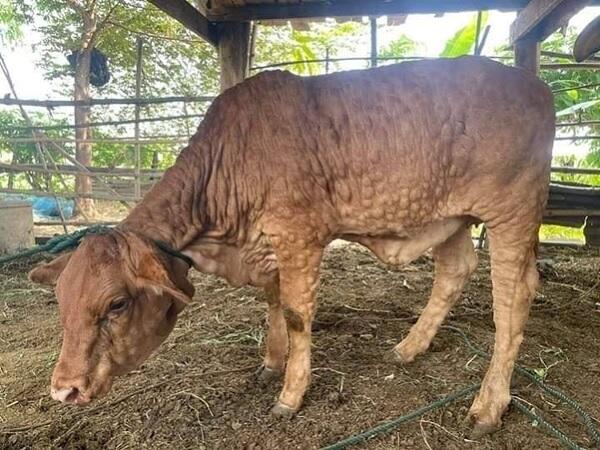A research group including Professor Kentaro Yamada and Distinguished Professor Naoaki Misawa from the Center for Animal Disease Control (CADIC) at the University of Miyazaki, Associate Professor Hitoshi Takemae, Associate Professor Mami Oba, Mr. Yuto Matsui (Visiting Researcher at CADIC) from the Center for Infectious Disease Epidemiology and Prevention Research at Tokyo University of Agriculture and Technology, and Thailand's National Institute of Animal Health has announced the development of a diagnostic method that can rapidly and simply differentiate between live vaccine strains (vaccine type) and field epidemic strains (wild-type and recombinant) of Lumpy Skin Disease (LSD), a viral livestock infectious disease affecting cattle. This aims to monitor the spread of the disease. The method is expected to be effectively utilized for disease control both domestically and internationally. Their findings were published in the international academic journal Veterinary Sciences on March 1.

Provided by the University of Miyazaki
LSD is a viral livestock infectious disease that primarily affects cattle and water buffalo. Although the mortality rate is relatively low at 1-5% and many cases heal naturally, it causes characteristic nodular skin lesions and decreased milk production, resulting in economic damage. The causative virus is Lumpy Skin Disease Virus (LSDV), which belongs to the same Poxviridae family as the smallpox virus, and is transmitted through blood-feeding insects such as mosquitoes, contaminated feed, water, and equipment. It was first reported in Zambia in southern Africa in 1929, spread to the Middle East and Europe after 1990, and rapidly expanded to Asian countries after 2019.
One countermeasure is the administration of live-attenuated vaccines. Currently used vaccines are effective for prevention, but vaccinated cattle may develop mild skin nodules as a side effect.
To monitor the spread of the disease, it is necessary to distinguish whether cattle with suspected skin nodules are infected with wild-type field strains or affected by live vaccine administration. The LSDV that rapidly spread across Asia in recent years was discovered to be a hybrid (recombinant) strain with a mosaic genome combining elements from both wild-type field strains and vaccine strains, creating the need for identification of these strains. Conventional partial base sequence comparisons commonly used for virus typing cannot distinguish between them, necessitating the development of a rapid, inexpensive, and simple method for widespread use.
The research was conducted under the Science and Technology Research Partnership for Sustainable Development (SATREPS) program jointly sponsored by JST and JICA: "The Acceleration of Livestock Revolution in Thailand aiming to be the Kitchen of the World through the Development of Novel Technologies for Stable Livestock Production and Food Safety" (led by Misawa).
The research group focused on high-resolution melting (HRM) analysis. This method offers excellent detection of base substitutions or insertions/deletions in double-stranded DNA. Double-stranded DNA dissociates when heated. Since this dissociation varies depending on the base sequence and length, it can be differentiated by the intensity of fluorescent dye that emits light when this is incorporated into double-stranded DNA.
The differential diagnostic method developed through this study utilizes the fact that the recombinant type possesses genes from both wild-type and vaccine type strains. HRM analysis is performed targeting gene regions that indicate wild-type and vaccine type. After performing conventional real-time PCR, HRM analysis can be done automatically within the equipment, with the ordinary diagnostic process taking approximately four hours. The group confirmed that the three strains can be identified very rapidly, cheaply, and simply compared to base sequence determination methods.
When HRM analysis was performed on 15 skin lesion tissue samples from infected cattle collected from eight provinces in Thailand, all were determined to be recombinant type. Since only 3 wells are needed for the diagnosis of one virus strain, up to 30 samples can be tested at once. In Japan, the first occurrence of LSD was confirmed in Fukuoka Prefecture in November 2024, and subsequently in Kumamoto Prefecture.
Matsui commented: "Since LSDV has a large genome size among viruses and high sequence conservation, we adopted a method utilizing multiple genes, which is commonly used for bacterial typing. We transferred this typing technology to Thai researchers invited to the University of Miyazaki, and they demonstrated the effectiveness and reliability of this method using clinical samples collected in Thailand. We hope this method will be widely used domestically and internationally to help control LSD."
Journal Information
Publication: Veterinary Sciences
Title: Development of a Multi-Locus Real-Time PCR with a High-Resolution Melting Assay to Differentiate Wild-Type, Asian Recombinant, and Vaccine Strains of Lumpy Skin Disease Virus
DOI: 10.3390/vetsci12030213
This article has been translated by JST with permission from The Science News Ltd. (https://sci-news.co.jp/). Unauthorized reproduction of the article and photographs is prohibited.




